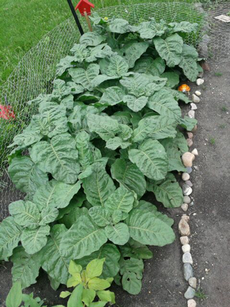Table of Contents
White sage and cedar. A braided bundle of sweetgrass. An abalone covering. An eagle plume. People of numerous Indigenous American tribes make use of these and other natural items as part of their petition and recovery techniques. Sage, sweetgrass or cigarette is burned in the covering, with the plume utilized to direct the great smelling smoke around a person.

The Art Owen room is an elaborate area that formerly was called the Bishop's Shop - the power of indigenous tobacco practices. Wood-paneled, with a coffered ceiling, chandelier and fireplace, the area looks out on the front grass of the historic Francis Structure. It is a peaceful space not far from Saint Marys' client spaces and surgical collections
The products represent the four elements of nature planet, water, wind and fire that are central to Indigenous American culture and spirituality. "Part of our society is we don't desire individuals to be alone, particularly in challenging times," claims Guimaraes, who was a signed up nurse for 20 years. "A client may desire their area smeared, including their garments and IV tree.
9 Simple Techniques For Ritual, Therapeutic, And Protective Uses Of Tobacco ( ...
"Finding out about smearing and how to much better offer the spiritual demands of Indigenous Americans I run into is extremely crucial for my future ministry," states Marit Johnson, that is pursuing ordination as a Lutheran priest. "It will be essential to continue enlightening myself regarding regional people and their spiritual techniques." Because her training with Guimaraes, Johnson took part in a smudging with an Ojibwe older and his partner in the Spiritual Treatment workplace.
"They happily permitted a team pastor and me to be existing during the smudging and explained various facets of their smudging practice, their petitions and their tunes. Both the person and her husband smeared me. The senior used the eagle feather to bless my eyes to help me to see much better, my ears to aid me to hear others' prayers much more plainly, my mouth to assist me speak clearly, and my hands to aid my work.

"People really felt stronger, appreciated and more enthusiastic after the smearing ceremony," states Soroka. The patients spoke with typically were open to a non-Native individual promoting the ceremony, and they reported that smudging assisted them to regard the healthcare facility as a safe place and "like home (the power of indigenous tobacco practices)." Bundle of knotted sweetgrass used in smudging ceremonies
Engaging Indigenous Peoples In Research On Commercial ... Things To Know Before You Buy
The searchings for likewise will certainly be discussed at the RISE for Equity seminar, Aug. 10-13 in Minneapolis, funded by Mayo Clinic School of Continual Professional Advancement. "The smearing event is of extensive importance to many hospitalized Indigenous American patients," says Soroka. "It adds to person well-being, healing and contentment. Our findings suggest that healthcare systems need to be delicate to the demands of Native populations and come to be educated concerning smudging and how to offer it.".

Native individuals practice diverse spiritual practices in Ontario, reflecting the variety of Indigenous peoples in Ontario and Canada. This area resolves the responsibility to fit Native spiritual beliefs and techniques in areas covered by the Code. "Indigenous peoples have the right to advertise, establish and keep their institutional frameworks and their unique custom-mades, spirituality, practices, procedures, practices and, in the cases where they exist, juridical systems or customs, according to global human rights standards." United Nations Affirmation on the Legal Rights of Aboriginal Peoples This plan utilizes "Aboriginal" as a comprehensive term to incorporate all Native peoples and identities, including status, non-status, Indian, Indigenous, Indigenous, Very First Nation, Mtis and Inuit.
It was typically utilized by the Inuit primarily as a survival device for staying cozy in the home, drying out garments and food preparation. It is now in some cases utilized as a routine teaching device and as component of opening and closing events at celebrations, where it has become a sacred sign of Inuit identity and traditional culture.
Table of Contents
Latest Posts
The 8-Minute Rule for Seo Case Study: How An Agency Boosted Bakery's Traffic ...
The 6-Minute Rule for Wax Vaporizers: Shop From $45
The Single Strategy To Use For I Am Under 18. I Bought A Vape And Canada Post Is ...
Navigation
Latest Posts
The 8-Minute Rule for Seo Case Study: How An Agency Boosted Bakery's Traffic ...
The 6-Minute Rule for Wax Vaporizers: Shop From $45
The Single Strategy To Use For I Am Under 18. I Bought A Vape And Canada Post Is ...